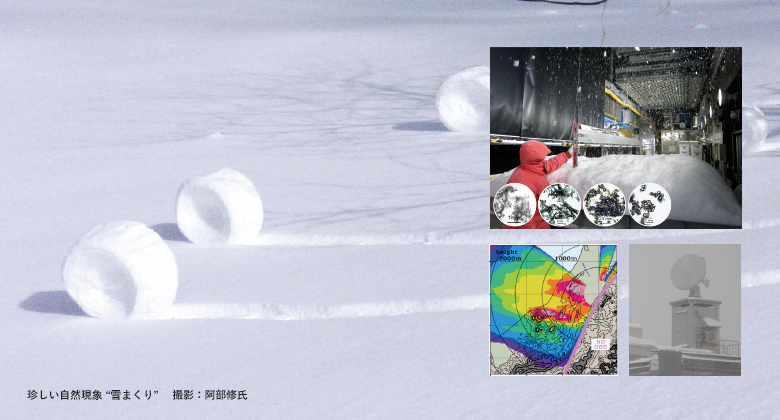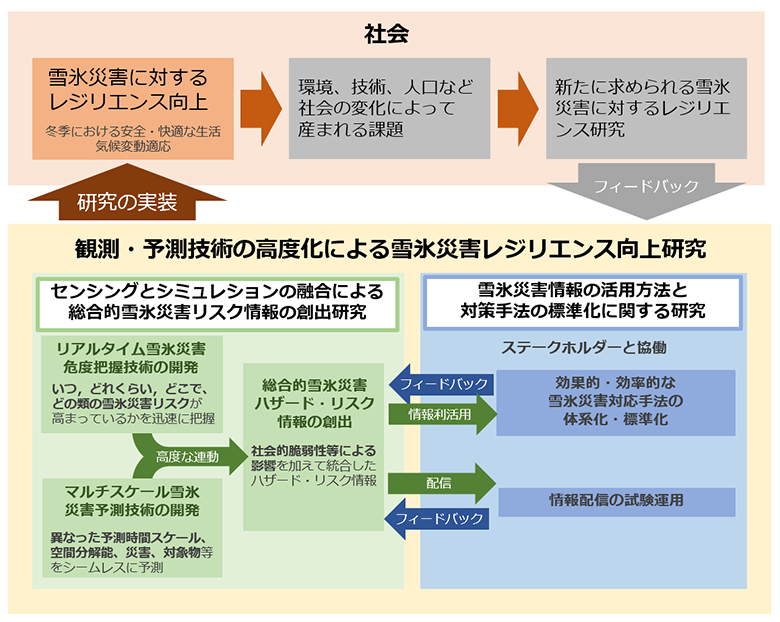Research on improving resilience to snow and ice disasters based on advanced monitoring and forecasting technologies
Aim for secure and comfortable winter life in our country

Current situation of snow and ice disaster
The impact of increasingly frequent and severe snow and ice disasters on social activities has become a serious problem in recent years, as extreme weather events increase due to climate change, and intensive heavy snowfalls caused by the Japan-Sea Polar-Airmass Convergence Zone (JPCZ) and other factors become more frequent. Even in areas that don't get heavy snowfalls, the vulnerability of urban society to snow is highlighted by the confusion that can be caused by sudden snowfalls, such as those caused by the South-coast cyclone.
However, as the issues and responses to snow and ice disaster countermeasures differ from region to region and organization to organization, it is difficult to apply successful countermeasure case studies across regions, and standard disaster countermeasure and response methods have yet to be established. In addition, the situation surrounding municipalities in snowy regions is severe, with serious issues such as financial shortages, depopulation and aging population, and lack of labor for snow removal.
In order to solve these problems, it is important to increase resilience through effective and efficient snow and ice disaster countermeasures that are standardized based on scientific knowledge, and based on this, it is necessary to reduce the risk of snow and ice disasters that are becoming more severe due to climate change and to promote adaptation to climate change.
Overview of research
With this awareness of the issues, this project will promote the following two sub themes (see figure below).
The first sub-theme is “Research on the creation of comprehensive risk information on snow and ice hazards through the integration of sensing and simulation”. In this theme, we will make the most of the advantages of our observation and forecasting technologies and experimental and measurement environments using Cryospheric Environment Simulator to advance sensing and simulation technologies for phenomena related to snow and ice disasters. Furthermore, by highly integrating sensing and simulation technologies, we will establish comprehensive snow and ice disaster hazard and risk assessment technologies that can respond to various types of snow and ice disasters and the damage caused by them. In addition, by integrating the effects of social vulnerability, which has not been taken into account, NIED will develop technologies to generate hazard and risk information that can be used as the basis for specific measures.
The second sub-theme is “Research on utilization of snow and ice disaster information and standardization of countermeasure methods”. Under this theme, in co-creation with the national government, municipalities, private companies, and other stakeholders, the project aims to conduct test distribution of information products generated by the research, and systematize and standardize effective and efficient snow and ice disaster response methods using the information.
Through these studies, we aim to realize a secure and comfortable winter life throughout our country that is sustainable for the future.

